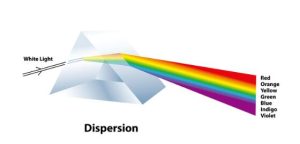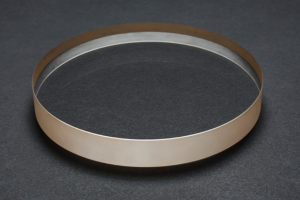An optical prism is a piece of glass or other transparent material cut at a precise angle and plane in optical devices, which can be used for analyzing and reflecting light. A regular triangular prism can separate white light into its constituent colors, known as the spectrum. Each color or wavelength that constitutes white light is bent or refracted, but in varying amounts.
Shorter wavelengths (towards the purple end of the spectrum) bend more, while longer wavelengths (towards the red end of the spectrum) bend less. This prism is used in certain spectroscopes, instruments for analyzing light, and determining the identification and structure of materials that emit or absorb light.

Optical prisms refract light to reflect (reflective prisms), disperse (dispersive prisms), or split (beam splitters) light. Prisms are usually made of glass, but any material can be used as long as the material is transparent and suitable for the design wavelength. Common materials include glass, plastic, and fluorite.
Optical prisms can reverse the direction of light through internal reflection, making them useful in binoculars.
Depending on the application, optical prisms can be made into many different forms and shapes. For example, the Polo prism consists of two prisms, which can invert both images and images, and are used in many optical observation instruments, such as periscope, binoculars and monocular.



